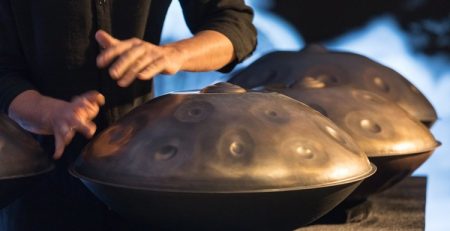With the popularity of the steelpan instrument over the last decade, more and more people are eager to learn how to master it. The handpan, in particular, is a unique instrument that seems to captivate the attention of anyone who hears it. While the instrument itself is relatively easy to learn, perfecting your technique can be quite challenging.
Fortunately, with a bit of dedication and focus, anyone can become a skilled handpan musician with a bit of practice. In this blog post, we’ll provide ten tips for improving your handpan playing technique.
The first tip for improving your playing technique is to practice consistently. Set aside a time to practice each day that works for you and make sure that you stick to it. Even if it’s just for 15 minutes, the consistent practice will help you to become more confident in your playing and will build up your stamina as well.
Second, always make sure that you warm up before playing. This will help to prevent any injuries as well as giving your hands and ears a chance to adjust to the instrument. Make sure to include some basic rolls and scales in your warm-up routine to get you in the groove.
Third, never rush. It can be tempting to try and play the handpan as quickly as possible, but this will only lead to sloppy playing. Make sure to take your time and focus on playing with intention and precision. This will help you to get the most out of your practice and make all of your notes count.
Fourth, practice by yourself and with others. It’s important to practice alone as well as with other musicians. Learning from others can help to broaden your musical knowledge, as well as give you a chance to hear different playing styles.
Fifth, listen to and learn from great handpan players. Listening to the masters of the instrument will give you a great idea of how the instrument should be played, as well as offering you a chance to learn ideas and techniques that you wouldn’t have thought about yourself.
Sixth, make sure to practice with a metronome. Setting up a metronome to play along with can help you to keep your timing and rhythm in check, as well as helping you to practice with accuracy and precision.
Seventh, build up your finger strength and flexibility. As with any instrument, it’s important to build up your finger strength and flexibility to be able to play comfortably and efficiently. Make sure to include some basic finger exercises in your practice routine.
Eighth, experiment with different techniques and sounds. Don’t be afraid to try new techniques and sounds as you play. This will help you to expand your repertoire and open up new possibilities for your playing.
Ninth, focus on your posture and positioning. Having good posture and positioning when playing can help you to play more efficiently and accurately. Also, make sure to keep your hands close to the instrument when playing to ensure that you get the best sound out of it.
Finally, practice slowly and then gradually speed up. It can be tempting to jump straight in to playing faster songs, but this will only lead to sloppy playing. Start slow and gradually build up your speed, making sure to focus on accuracy and consistency each time.
By following these tips, you’ll soon be on your way to becoming a master handpan musician! Remember to practice regularly, focus on each note, and don’t be afraid to experiment and have fun. With dedication and focus, you’ll be able to improve your playing technique quickly and confidently.



